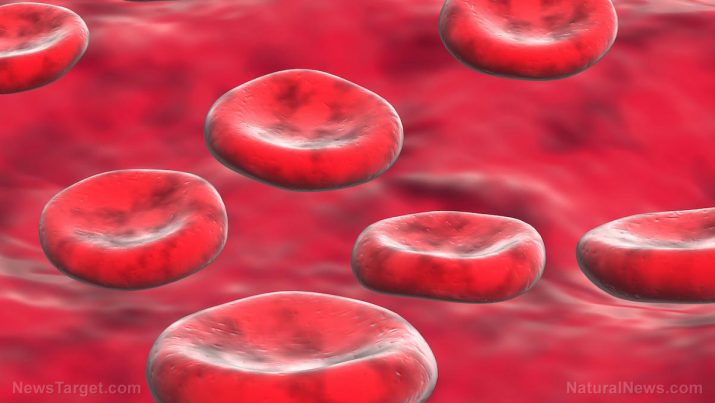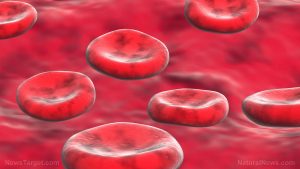
Iron-deficiency anemia – causes, side effects and treatments at NaturalPedia.com
Thursday, May 03, 2018 by Michelle Simmons
http://www.naturalpedia.com/iron-deficiency-anemia-causes-side-effects-and-treatments-at-naturalpedia-com.html

Iron-deficiency anemia, the most common form of anemia, occurs when the levels of iron in the body are too low to support the normal production of red blood cells. Iron-deficiency anemia can occur because the body loses more blood cells and iron than it can replace; the body does not absorb iron well; you are not eating enough foods that contain iron; or the body needs more iron than normal, such as during pregnancy or breastfeeding.
People with an increased risk of iron-deficiency anemia include women of childbearing age, pregnant women, people with poor diets, people who donate blood frequently, infants and children, especially those born prematurely or undergoing a growth spurt, and vegetarians who do not replace meat with another iron-rich food.

Known side effects of iron-deficiency anemia
The side effects of iron-deficiency anemia generally include general weakness, dizziness or lightheadedness, extreme fatigue, fast heartbeat, easily broken and brittle nails, paler than normal skin, chest pain, shortness of breath, headaches, cold hands and feet, soreness or inflammation of the tongue, cravings for non-nutritive things, such as dirt, starch, or ice, and poor appetite, especially in children.
If the condition remains untreated, it could lead to other complications, such as slow growth and developmental delays in children and infants; heart problems, such as heart failure or an enlarged heart due to lack of oxygen; and complications in pregnancy, such as low birth weights and a higher risk for premature birth.
Body systems harmed by iron-deficiency anemia
The body system harmed by iron-deficiency anemia is the circulatory system, as ti affects the production of the red blood cells and the amount of oxygen carried around in the bloodstream.
List of foods or nutrients that prevent iron-deficiency anemia
The foods that prevent iron-deficiency anemia include the following:
- Black beans
- Chickpeas
- Clams
- Eggs
- Fortified breakfast cereals
- Giblets
- Lentils
- Liver
- Mussels
- Oysters
- Pumpkin seeds
- Red meat
- Sesame seeds
- Soybeans
- Spinach
Treatments, management plans for iron-deficiency anemia
Treatments for iron-deficiency anemia include taking iron supplements to replace the missing ion, eating food rich in iron, and avoiding foods and medicines that make it difficult for the body to absorb iron, such as tea and coffee, wholegrain cereals, calcium, antacids, and proton pump inhibitors. Treatment may also involve treating the underlying cause of anemia.
Where to learn more
- Iron Deficiency: The Best Foods To Treat Anemia
- Anemia reversed
- Feeling unusually exhausted lately? You may be suffering from iron deficiency
- Iron-deficiency, The Wrong Supplements Can Hurt You
- Naturally avoid and correct dangerous anemia
Summary
Iron-deficiency anemia occurs when there is not enough iron in the body to make red blood cells.
Iron-deficiency anemia is the most common form of anemia.
Iron-deficiency anemia causes general weakness, dizziness or lightheadedness, extreme fatigue, fast heartbeat, easily broken and brittle nails, paler than normal skin, chest pain, shortness of breath, headaches, cold hands and feet, soreness or inflammation of the tongue, cravings for non-nutritive things, such as dirt, starch, or ice, and poor appetite, especially in children.
Iron-deficiency anemia can be prevented by eating foods, such as eggs, red meat, liver, giblets, oysters, mussels, clams, chickpeas, fortified breakfast cereals, pumpkin seeds, soybeans, black beans, lentils, spinach, and sesame seeds.
Iron-deficiency anemia can be treated through iron supplements and foods rich in iron.
Sources include:
Tagged Under: Tags: iron deficiency anemia





